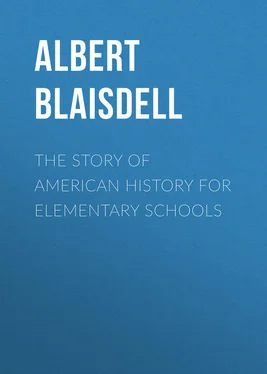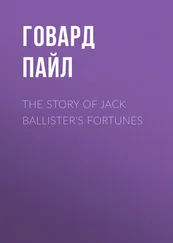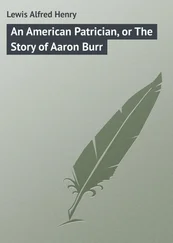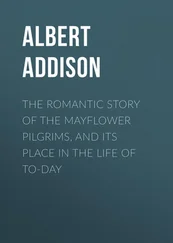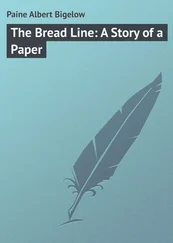Albert Blaisdell - The Story of American History for Elementary Schools
Здесь есть возможность читать онлайн «Albert Blaisdell - The Story of American History for Elementary Schools» — ознакомительный отрывок электронной книги совершенно бесплатно, а после прочтения отрывка купить полную версию. В некоторых случаях можно слушать аудио, скачать через торрент в формате fb2 и присутствует краткое содержание. ISBN: , Жанр: foreign_antique, foreign_prose, Историческая проза, на английском языке. Описание произведения, (предисловие) а так же отзывы посетителей доступны на портале библиотеки ЛибКат.
- Название:The Story of American History for Elementary Schools
- Автор:
- Жанр:
- Год:неизвестен
- ISBN:http://www.gutenberg.org/ebooks/34600
- Рейтинг книги:5 / 5. Голосов: 1
-
Избранное:Добавить в избранное
- Отзывы:
-
Ваша оценка:
- 100
- 1
- 2
- 3
- 4
- 5
The Story of American History for Elementary Schools: краткое содержание, описание и аннотация
Предлагаем к чтению аннотацию, описание, краткое содержание или предисловие (зависит от того, что написал сам автор книги «The Story of American History for Elementary Schools»). Если вы не нашли необходимую информацию о книге — напишите в комментариях, мы постараемся отыскать её.
The Story of American History for Elementary Schools — читать онлайн ознакомительный отрывок
Ниже представлен текст книги, разбитый по страницам. Система сохранения места последней прочитанной страницы, позволяет с удобством читать онлайн бесплатно книгу «The Story of American History for Elementary Schools», без необходимости каждый раз заново искать на чём Вы остановились. Поставьте закладку, и сможете в любой момент перейти на страницу, на которой закончили чтение.
Интервал:
Закладка:
28. His Romantic Adventures.– Our bold adventurer now went farther east and enlisted in the Austrian army to fight against the Turks. In that service he soon became well known as a brave and dashing fellow, and before long he was made a captain of cavalry. After a battle in which the Austrians were defeated, Smith, badly wounded, lay a while among the dead. But he was found and cared for. After his wounds had healed, he was taken to Constantinople and sold to the Turks as a slave. A Turkish lady showed him great kindness.
Then he was sent to Russia. There, at a place about a mile from the house of his cruel master, he was set to threshing grain. One day his owner rode up and shamefully abused him. Stung by his insolence, Smith killed the man with a flail, exchanged his own slave garments for his victim's clothes, hid the body in the straw, mounted a horse, and started off. He traveled over Russia, Austria, France, and Spain, and at last, after many stirring adventures, drifted back to his old home in England again.
All these stories and many more Captain John tells us in his book of travels. Perhaps they are true, and perhaps we may conclude with some other persons that Smith was a daring fellow at telling stories as well as at fighting Turks!
29. Captain John begins his Career in the New World.– When our adventurer arrived in England, all the talk was about the wonderful western world. Although he had roamed so widely and had fared so hard, he was then less than thirty years old and was ready for new adventures. All of his previous life seemed a preparation for a career of romance and heroism in the New World. So he joined an expedition which sailed for Virginia in the early part of 1607.
On the voyage his superior talents and experience were so evident that his comrades became jealous of him, and on some pretext caused him to be put in chains. They had a long and stormy voyage. It was as late as April when they reached Chesapeake Bay. They were so glad to leave the stormy ocean and find a place of rest that they named the land near their first anchorage Point Comfort, a name it still bears.
They entered between two capes, which they called Charles and Henry from the king's two sons. From their king, James the First, they named the river up which they sailed the James, and they called the village that they built Jamestown. Thus was laid in the year 1607 the foundations of the first permanent English settlement in the New World.
30. How Smith managed the Virginia Colonists.– These Virginia colonists were not suited to the rough, hard work of making a settlement in this new country. They had not been accustomed to earn their living by manual toil. They liked to call themselves "gentlemen," as if that title somehow made an excuse for shiftless idleness. The real need was for farmers, carpenters, blacksmiths, masons – useful mechanics and willing laborers. These genteel settlers expected to find in this wonderful region plenty of gold; their sole purpose was to get enough of the precious ore, and then go back to England and remain there.
But Captain Smith was the saving spirit of the colony. He showed the immigrants the necessity of labor, and told them plainly that if they would not work they must not expect to eat. He taught them to fell trees and build huts. Their voyage had been so long, and so much of their provisions had been spoiled, that, when they landed, their stock of food was almost gone. Something must be done, and that soon, or they would starve.
Then was shown the courage, skill, and good sense of an energetic leader. The corn that a few friendly Indians brought to the settlers was not enough to feed so many. Therefore Smith took some companions, went in his boat up and down the rivers, made friends of the Indians, and bought from them corn and game, giving in payment shiny trinkets, beads, and little mirrors.
But the river lands were low and unhealthful; the water was bad; very many of the settlers became sick; and, before the autumn frosts came, more than half of them had died. Smith worked hard to help the survivors and to teach them to help themselves. Meanwhile, in his boat, he made long excursions up the James and the Potomac rivers, hoping perchance to find a way to the South Sea, as every one then called the Pacific Ocean.
31. Captured by the Indians.– On one of these exploring expeditions a gang of natives attacked Smith and killed all his men. He seized an Indian and holding him as a shield, shot down three of the savages. The place being swampy, he suddenly sank to his knees in the oozy soil and was captured by the enemy. Then the quick-witted prisoner, taking out his pocket compass, showed the vibrations and use of the needle, and spoke of the sun, moon, and stars. He interested his captors so deeply that they were sure he must be a supernatural being from some far-off world. They were afraid to kill him.
He persuaded them to send to the colony a piece of paper on which he had written. The result surprised them all the more! This strange being could make paper talk!
32. How Pocahontas saved Captain John's Life.– At last Captain John was sent to the great chief Powhatan, and by him was held captive during several weeks. These Indians, too, he amused with his compass and his writing; but after a while they grew tired of him, and Powhatan concluded to kill him.
So one day they gathered around the victim; he was stretched on the ground, his head was placed on a stone, and all was ready. A savage was just raising his club for the fatal blow, when forth rushed the bright young Pocahontas, the pet daughter of the old chief. Throwing her arms around Smith's neck, she turned her face to her father and begged him to spare the captive's life. "Kill me ," she cried; "kill me ; you shall not kill him !" It seems that Smith had been improving his time in making whistles and rattles and strings of beads and shells for the Indian girl, and so had won her affection; and she in return saved his life! Indian chiefs do not often indulge in pity; but for the sake of his beloved daughter Powhatan released Smith and soon after let him go back to Jamestown. Such is the story of his romantic rescue as Captain John told it years afterwards. While there is nothing improbable about it, yet some people believe that he invented the story to magnify his own importance.
33. The Romantic Story of Pocahontas.– Pocahontas was at this time only about twelve years of age. Ever afterward she continued to be very friendly to the colonists, and often visited them at Jamestown, sometimes bringing baskets of corn to the hungry white men. Once the faithful girl came stealthily by night long miles through the dark forests to inform Smith of an Indian plot to murder all the whites.
As Pocahontas grew up, one of the young Englishmen, John Rolfe, became much attached to her. He said he had had a marvelous vision telling him that he ought to make her a Christian and marry her. That was nothing so very wonderful, for then as now tender-hearted youths often dreamed at night of what they were thinking of by day. In 1613, in the rude little church at Jamestown, Pocahontas gave up her Indian religion, accepted the Christian faith, and was baptized. She took the name Rebecca. The next year she was married to Rolfe. This romantic marriage was very fortunate for the colony, for it made her father, Powhatan, a warm friend to the feeble settlers, who at this time were in sore need of help.
34. The Indian Princess receives a Warm Welcome in London.– Three years afterwards the fair Indian girl, "Lady Rebecca," went with her husband to England, where of course she attracted a great deal of attention. The people came in crowds to see her. They cheered as she rode through the streets of London.
Читать дальшеИнтервал:
Закладка:
Похожие книги на «The Story of American History for Elementary Schools»
Представляем Вашему вниманию похожие книги на «The Story of American History for Elementary Schools» списком для выбора. Мы отобрали схожую по названию и смыслу литературу в надежде предоставить читателям больше вариантов отыскать новые, интересные, ещё непрочитанные произведения.
Обсуждение, отзывы о книге «The Story of American History for Elementary Schools» и просто собственные мнения читателей. Оставьте ваши комментарии, напишите, что Вы думаете о произведении, его смысле или главных героях. Укажите что конкретно понравилось, а что нет, и почему Вы так считаете.
